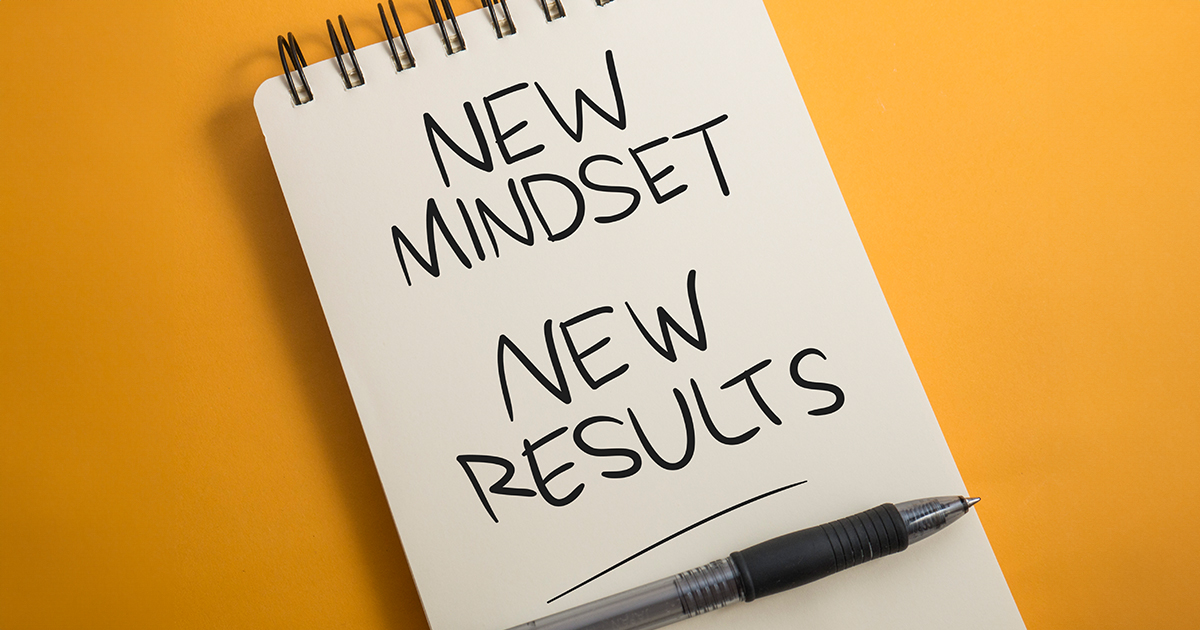How—and Why—to Improve Your Mindset
At any given moment, the quality of our well-being is deeply shaped by our state of mind. When old thought patterns no longer serve us, learning to recognize and shift them becomes essential for growth. In this article, we’ll explore how small yet powerful shifts in mindset can spark greater resilience and lead to a more fulfilling life.
The Power of Mindsets
Mindsets are like mental lenses that shape how we interpret events, make decisions, and respond to challenges. They influence everything—from how we seize opportunities to how we handle setbacks.
Mindset work—consciously reshaping our limiting beliefs—can strengthen emotional resilience and help us make healthier decisions. Even a single shift in perspective can ripple across many areas of life.
Take, for example, someone frustrated by a spouse’s untidiness. A blame-oriented mindset might say, “They don’t respect me.” But shifting to “We have different habits, and that’s okay” can ease tension and promote harmony.
Or consider someone who believes, “I’m just not good at time management.” That belief creates inertia. A growth mindset—“I can improve with practice”—opens the door to experimentation and progress.
Mindset Impacts Health and Longevity
Mindsets don’t just influence emotions—they shape our physiology, health behaviors, and even how long we live. For example, a meta-analysis of 229,391 individuals found that optimists live longer and have a lower risk of heart disease than pessimists (1).
Likewise, people who regularly feel gratitude or joy tend to experience better health outcomes overall (2–3). In other words, how we think about life may subtly—but powerfully—shape how well and how long we live.
Why We Overlook Mindset Work
Despite its potential, mindset work is often ignored. Most of us rarely set aside time to reflect on and improve our mindset and thought patterns—when was the last time you did?
One reason is that we often fixate on the most painful or ingrained negative loops—the ones least likely to shift quickly. That can be discouraging and lead us to give up before we even begin.
Positive vs. Negative Mindsets: A Spectrum
Mindsets vary not only in how positive or negative they are, but also in how deeply they’re embedded. Positive cognitive mindsets like gratitude, optimism, and viewing stress as a challenge are relatively easy to practice with intention.

Negative mindsets like chronic worry or rumination are often rooted in past experiences or subconscious fears, which can make them harder to change.
Rather than being strictly good or bad, most mindsets fall along a continuum. It’s normal to feel pessimistic at times—but when that mindset becomes dominant, it can lead to avoidance behaviors and self-fulfilling prophecies.
Should You Focus on Positivity or Uprooting Negativity?
Although addressing negative thought patterns is important, many people find it more effective to begin by cultivating positive ones. Here are three reasons why starting with the positive can be especially effective:
- Negativity is sticky. Our brains are wired to prioritize threats, making negative thoughts more likely to grab and hold our attention.
- Deep beliefs are complex. Unpacking old mental patterns often involves emotional work that takes time.
- Positive thoughts are trainable. They may feel unfamiliar at first, but with regular practice, they become easier to access.
Where to Begin: Build the Positive First
If you’re feeling stuck on how to improve your mindset or simply looking to grow, try planting new mental seeds. Practicing gratitude, reframing challenges, or engaging in positive self-talk can gradually shift your mental baseline.
Over time, positivity builds momentum—and softens the grip of negative thought patterns.
Small Steps Create Big Shifts
Mindset change doesn’t require dramatic overhauls. Just as short bursts of physical activity can improve health, even small moments of intentional mental practice make a meaningful difference.
In fact, the 2018 Physical Activity Guidelines for Americans showed that even brief bouts of exercise support better health. Similarly, mindset shifts can begin with just a few minutes a day of gratitude journaling, mindfulness, or reframing a negative thought.
Psychologist Barbara Fredrickson’s research shows that small doses of positivity lead to a “broaden-and-build” effect—expanding our thinking, strengthening resilience, and helping us better navigate life’s daily challenges (4).
Final Thoughts
Improving your mindset is a powerful, often underused tool for improving well-being—not just in how we feel, but in how we live, relate, and grow. The way we think shapes the habits we form, the risks we take, and the resilience we build over time.
The good news? Change doesn’t require perfection. It begins with small, consistent choices. A moment of gratitude, a reframe during stress, a pause before a negative spiral—these small shifts compound, gradually reshaping how we experience the world.
In future posts, we’ll explore specific mindsets that enhance energy, deepen resilience, and elevate life satisfaction. But for now, remember: you don’t need to overhaul everything. Start with one thought, one practice, one intention. Stay curious, stay compassionate—and let your mindset work for you, not against you.
Each shift counts. And over time, they lead somewhere meaningful.
REFERENCES
- Rozanski A, Bavishi C, Kubzansky LD, Cohen R. Association of Optimism With Cardiovascular Events and All-Cause Mortality: A Systematic Review and Meta-analysis. JAMA Netw Open. 2019 Sep 4;2(9):e1912200. doi: 10.1001/jamanetworkopen.2019.12200. PMID: 31560385;
- Chen Y, Okereke OI, Kim ES, Tiemeier H, Kubzansky LD, VanderWeele TJ. Gratitude and Mortality Among Older US Female Nurses. JAMA Psychiatry. 2024;81:1030–1038.
- Chida, Yoichi MD, PhD; Steptoe, Andrew DPhil. Positive Psychological Well-Being and Mortality: A Quantitative Review of Prospective Observational Studies. Psychosomatic Medicine 2008; 70:741-756.
- Fredrickson =Broad Fredrickson, B. L. (2001). The role of positive emotions in positive psychology: The broaden-and-build theory of positive emotions. American Psychologist, 2001; 56:218–226.



